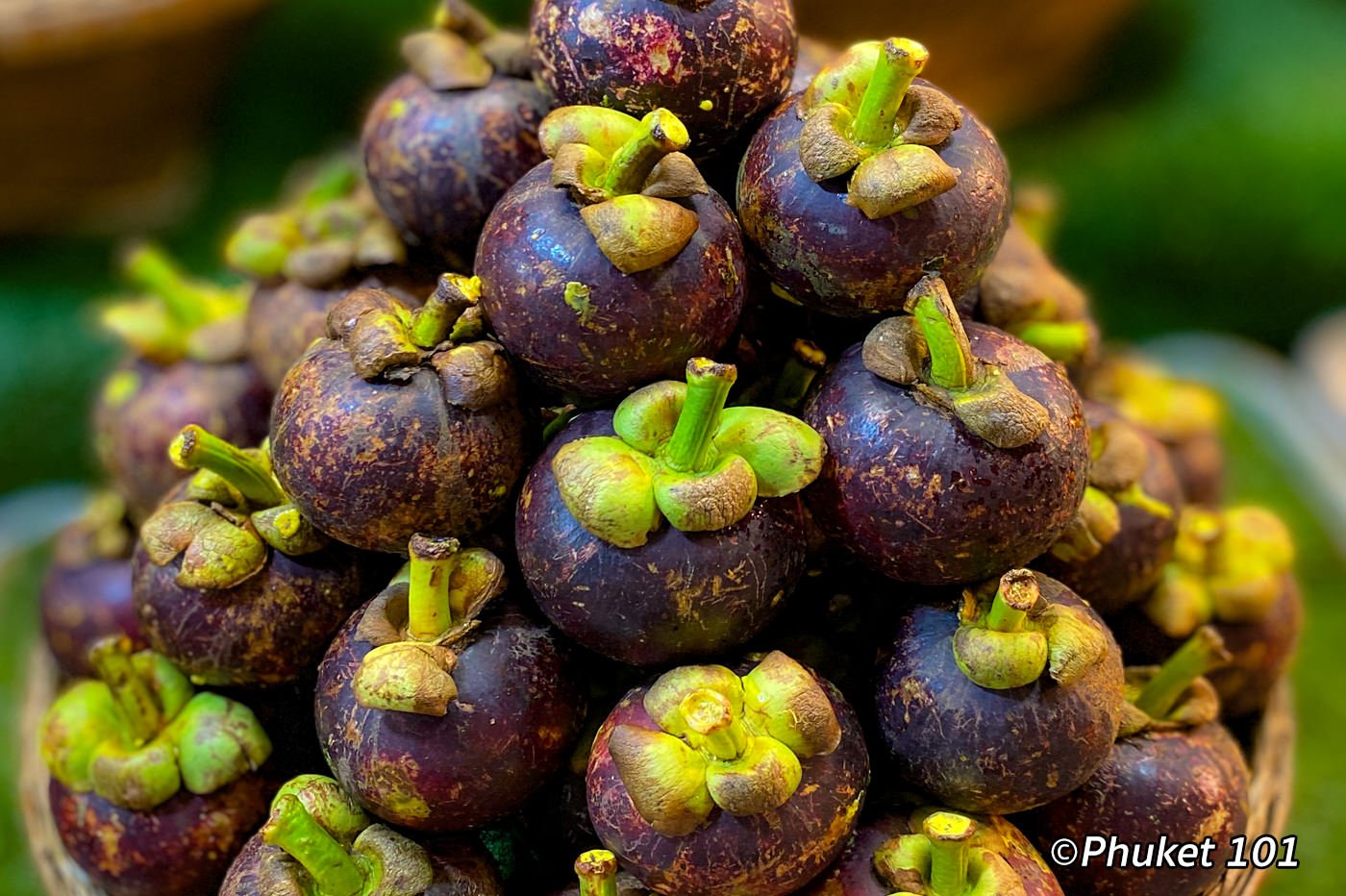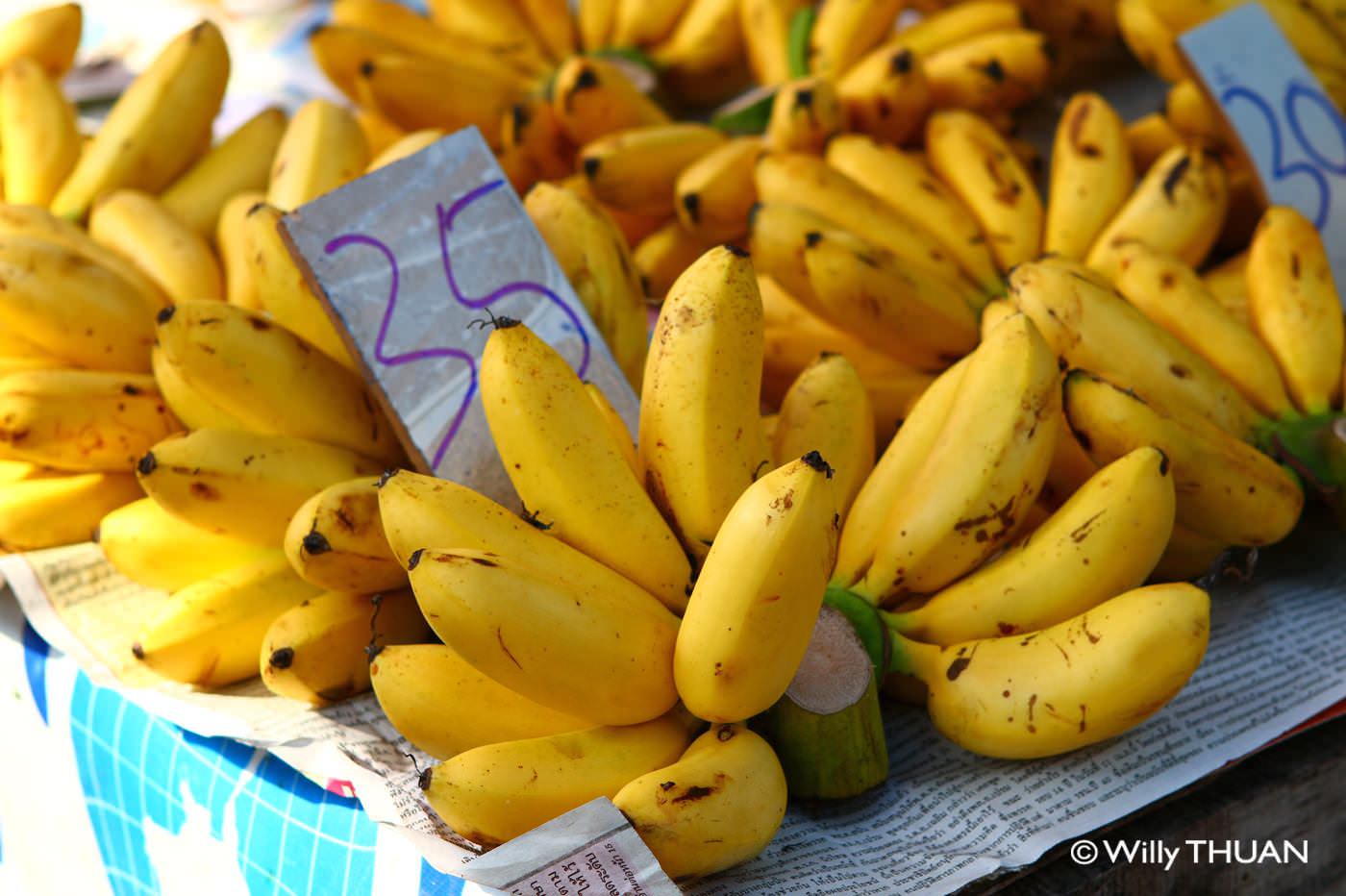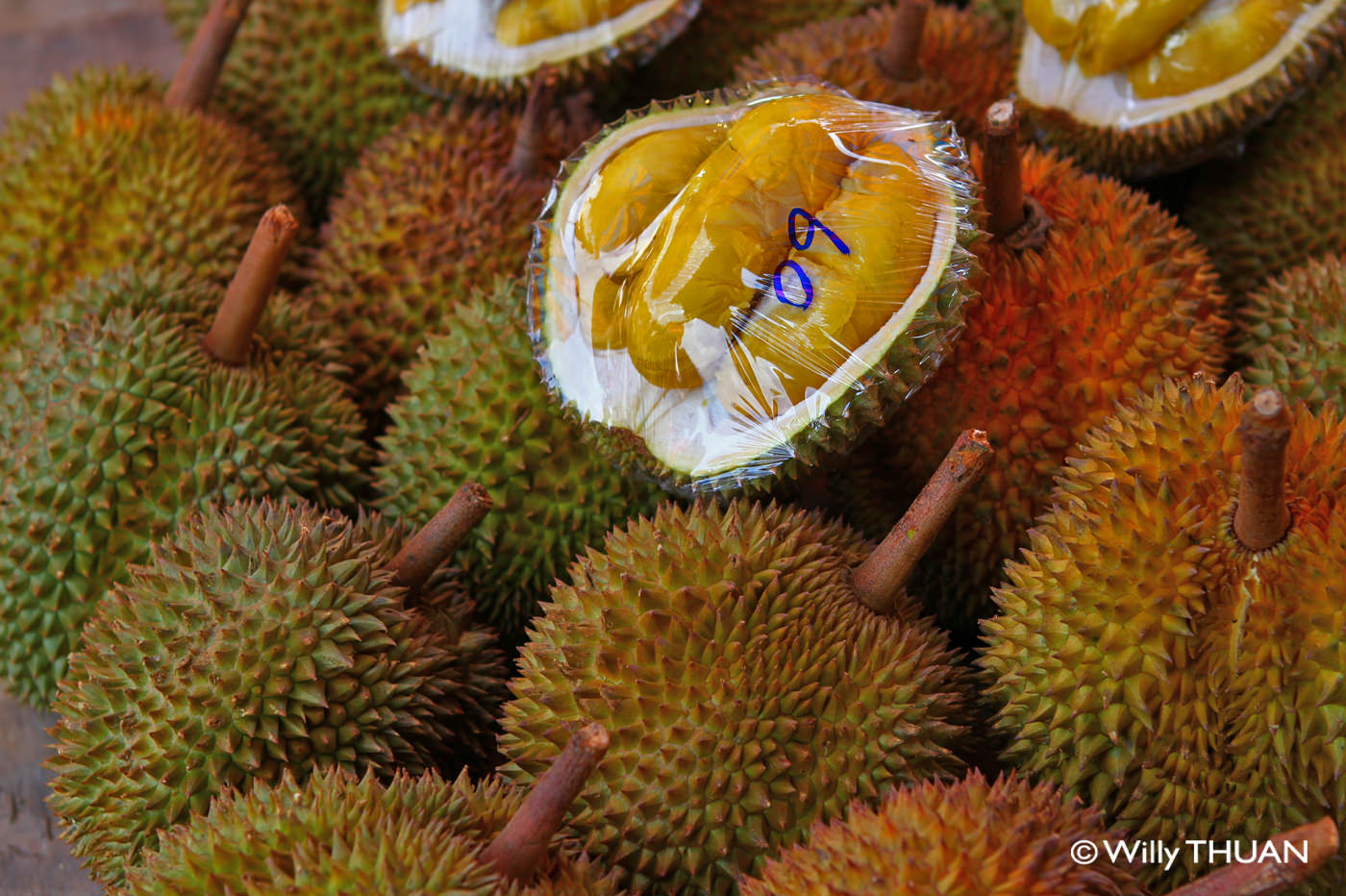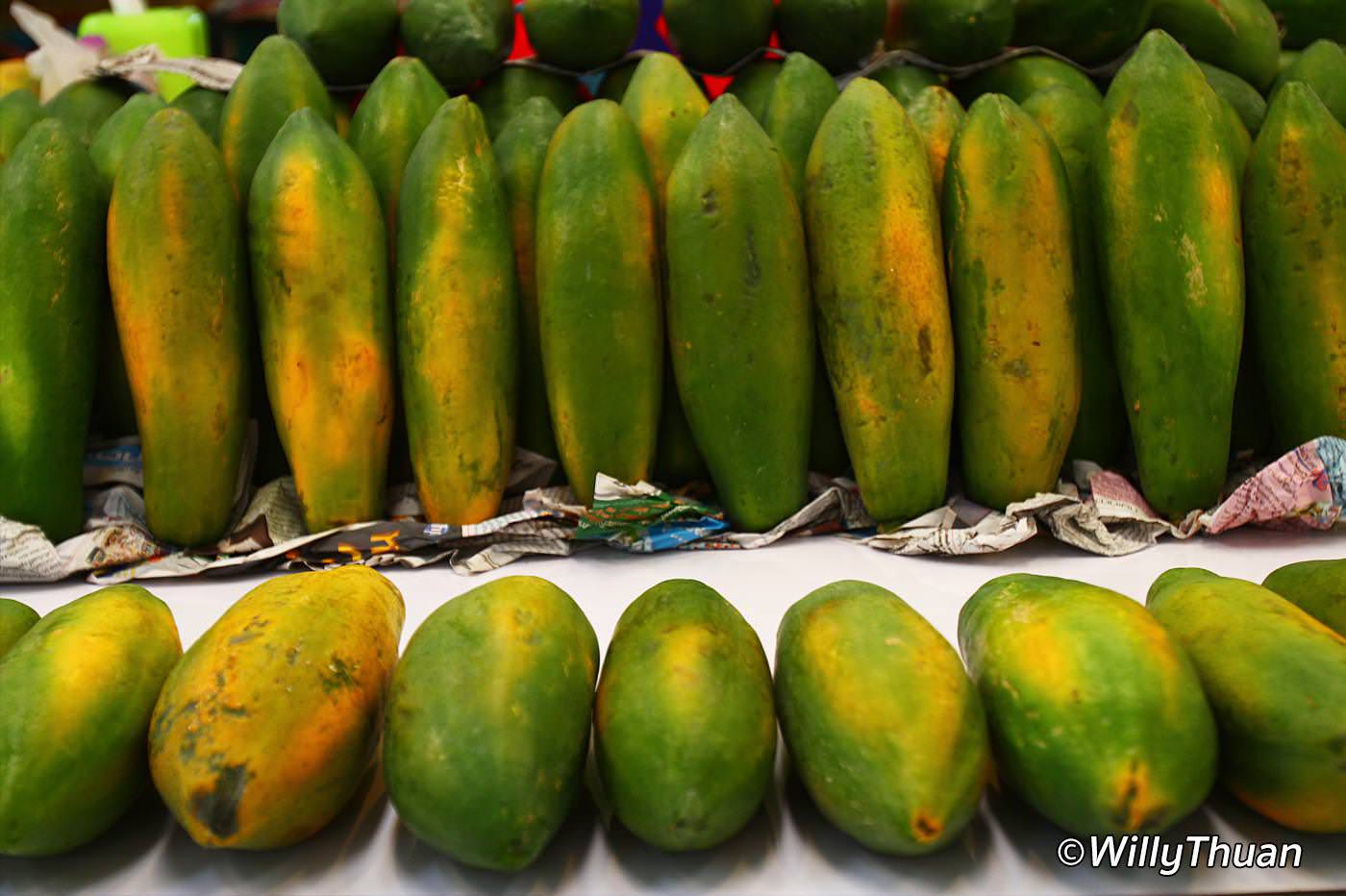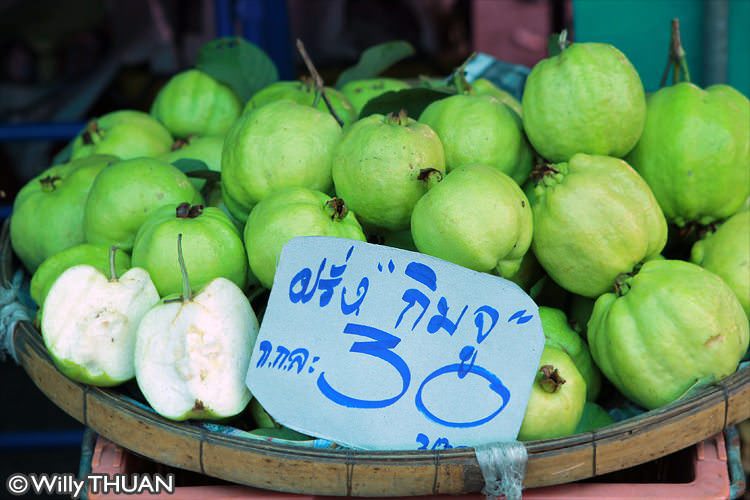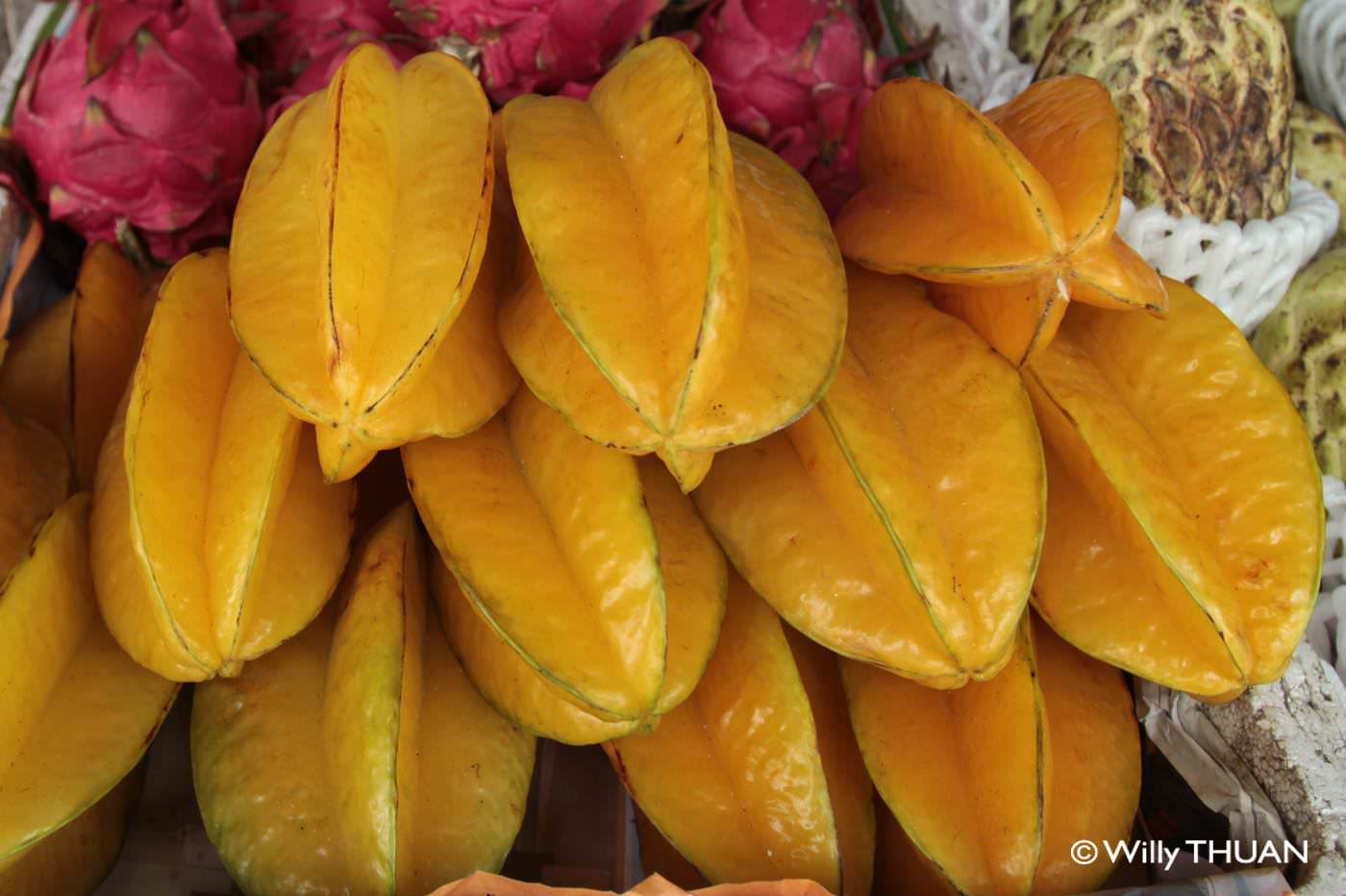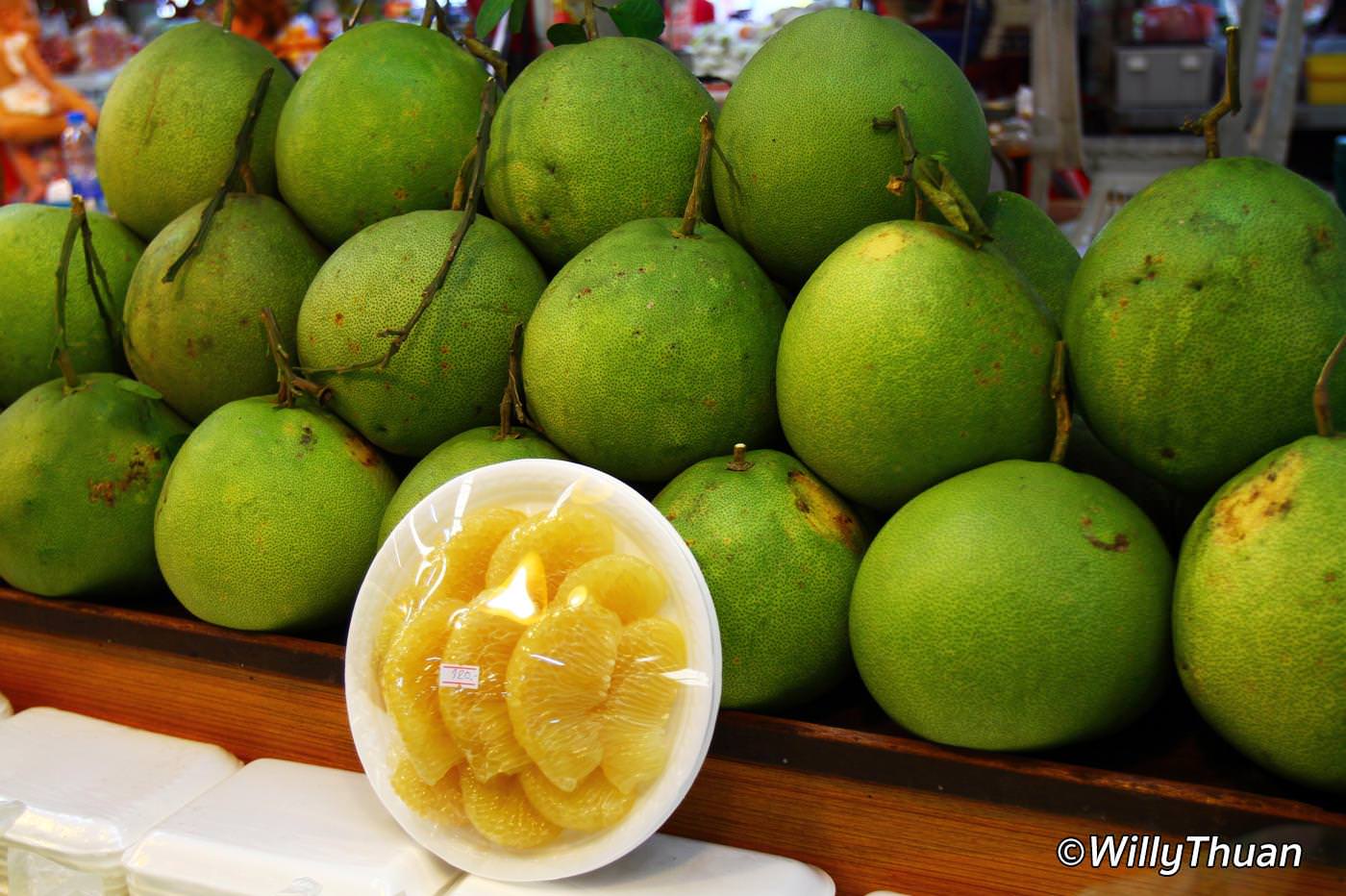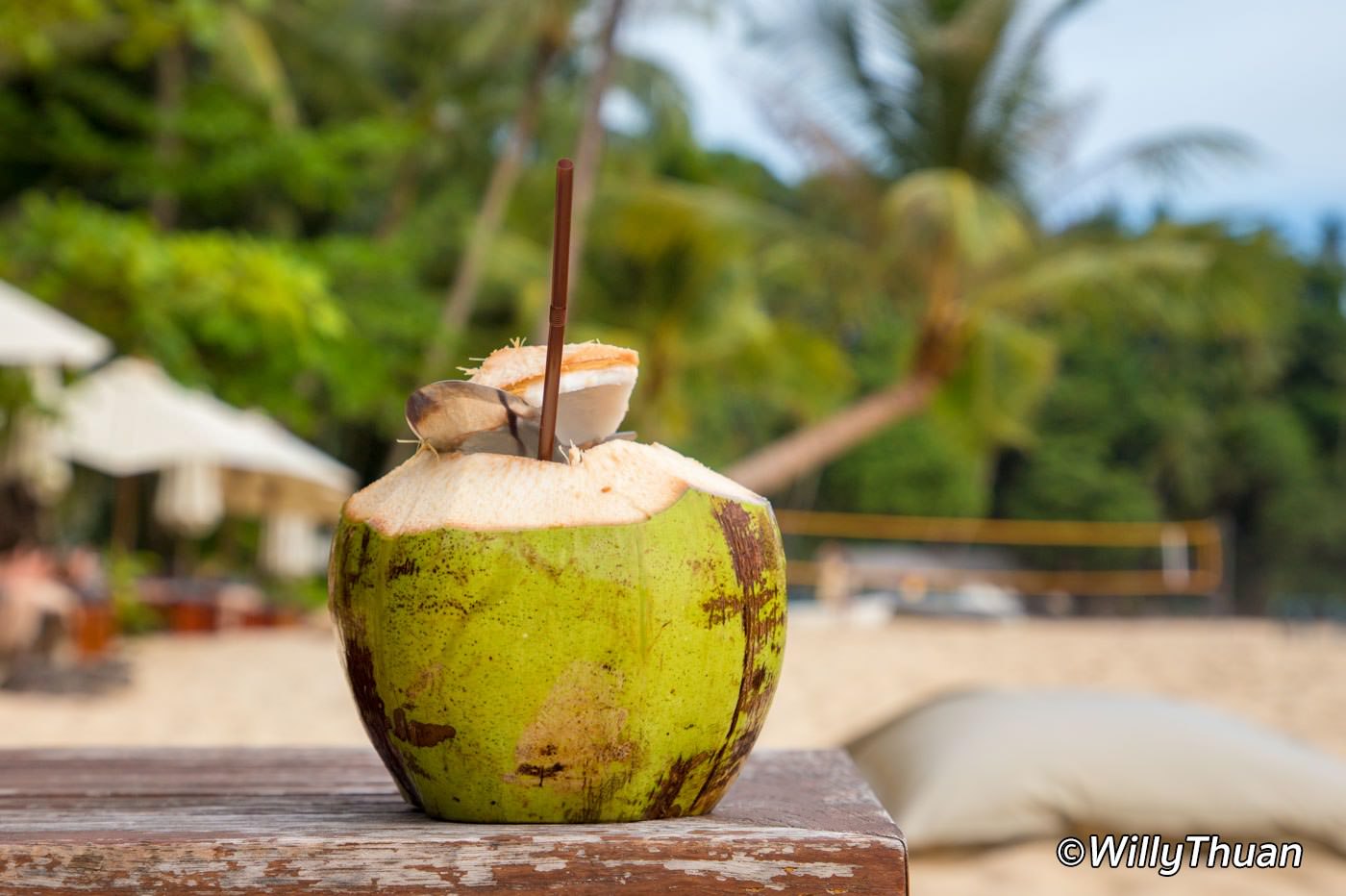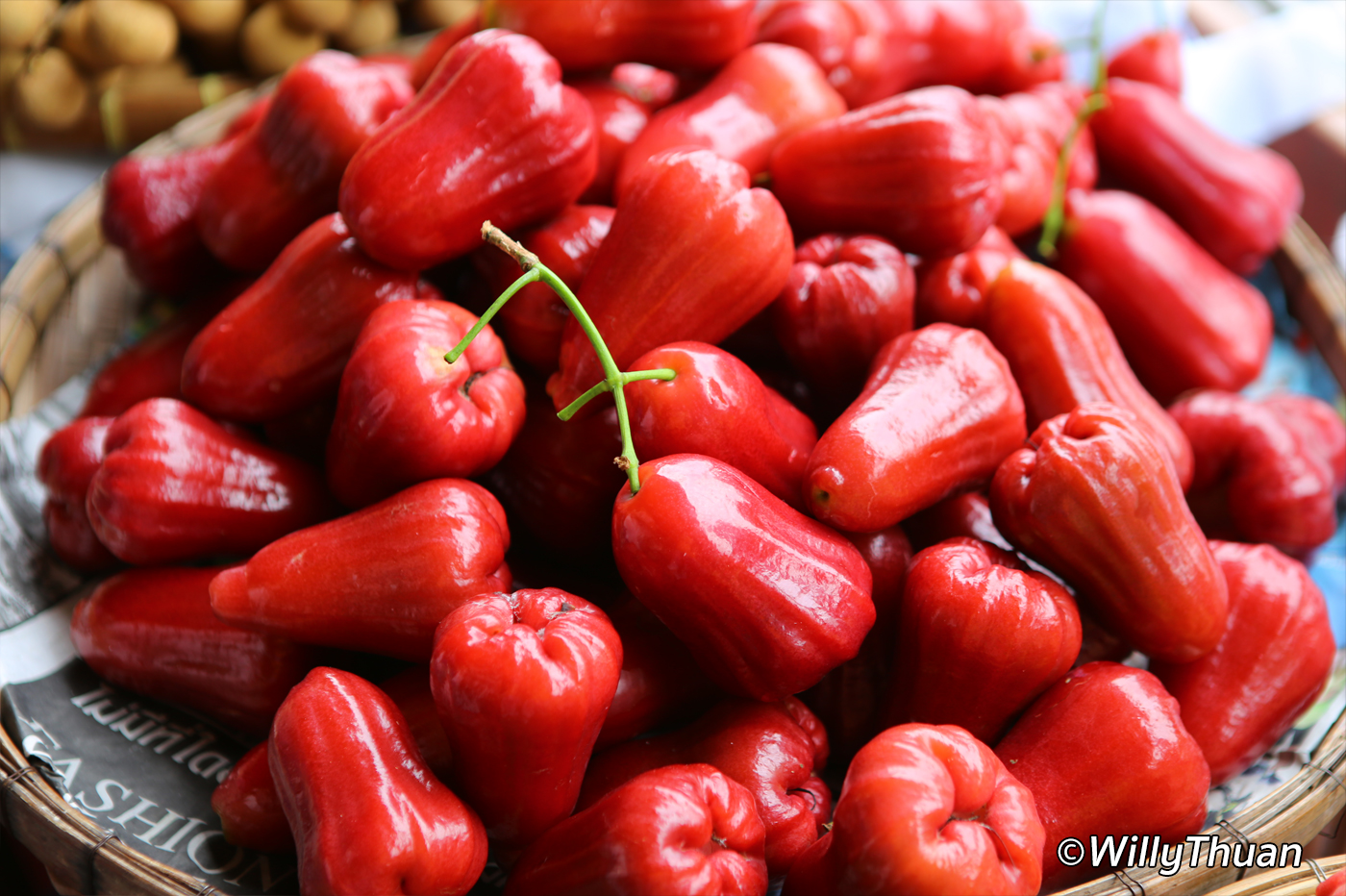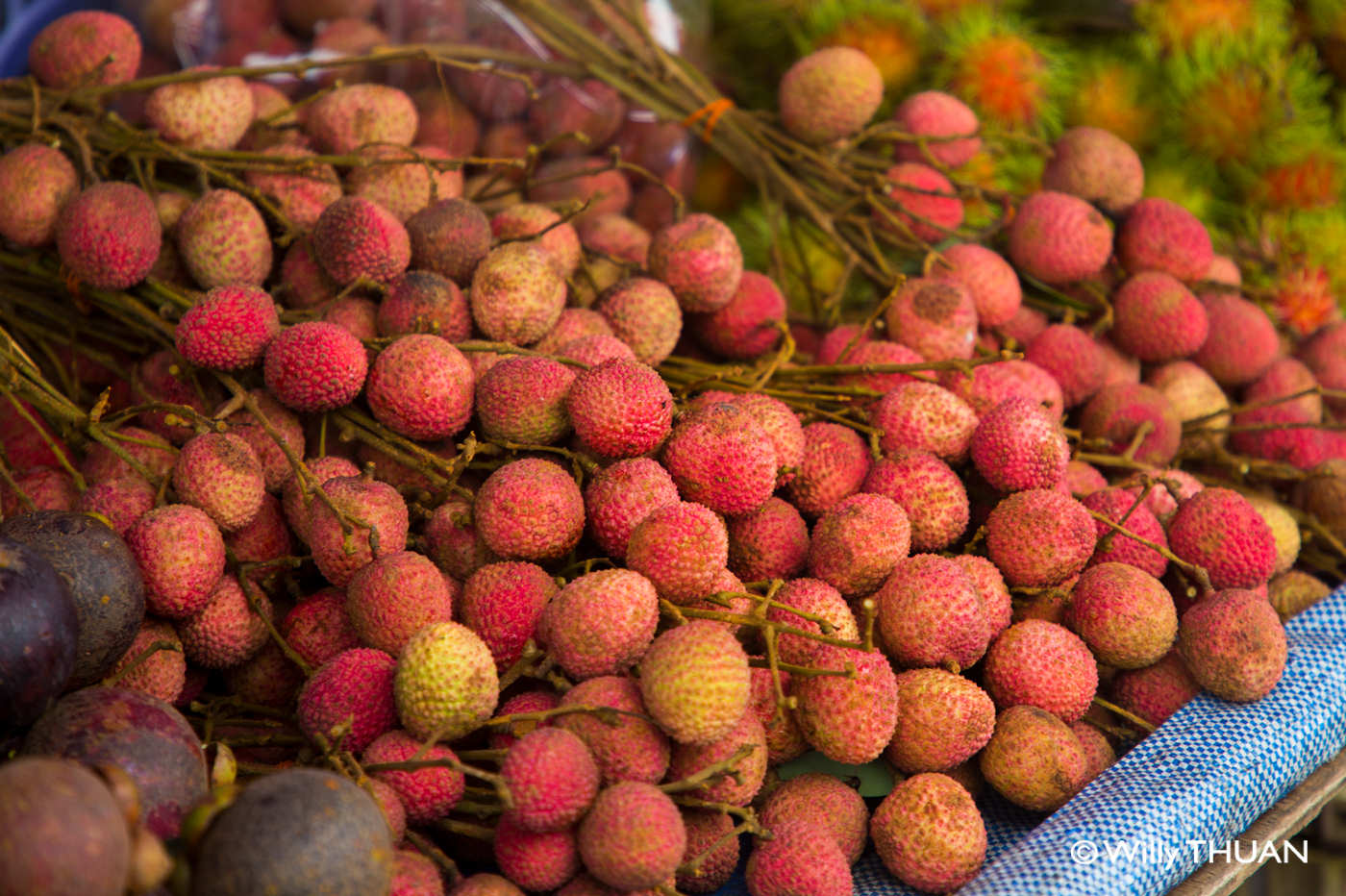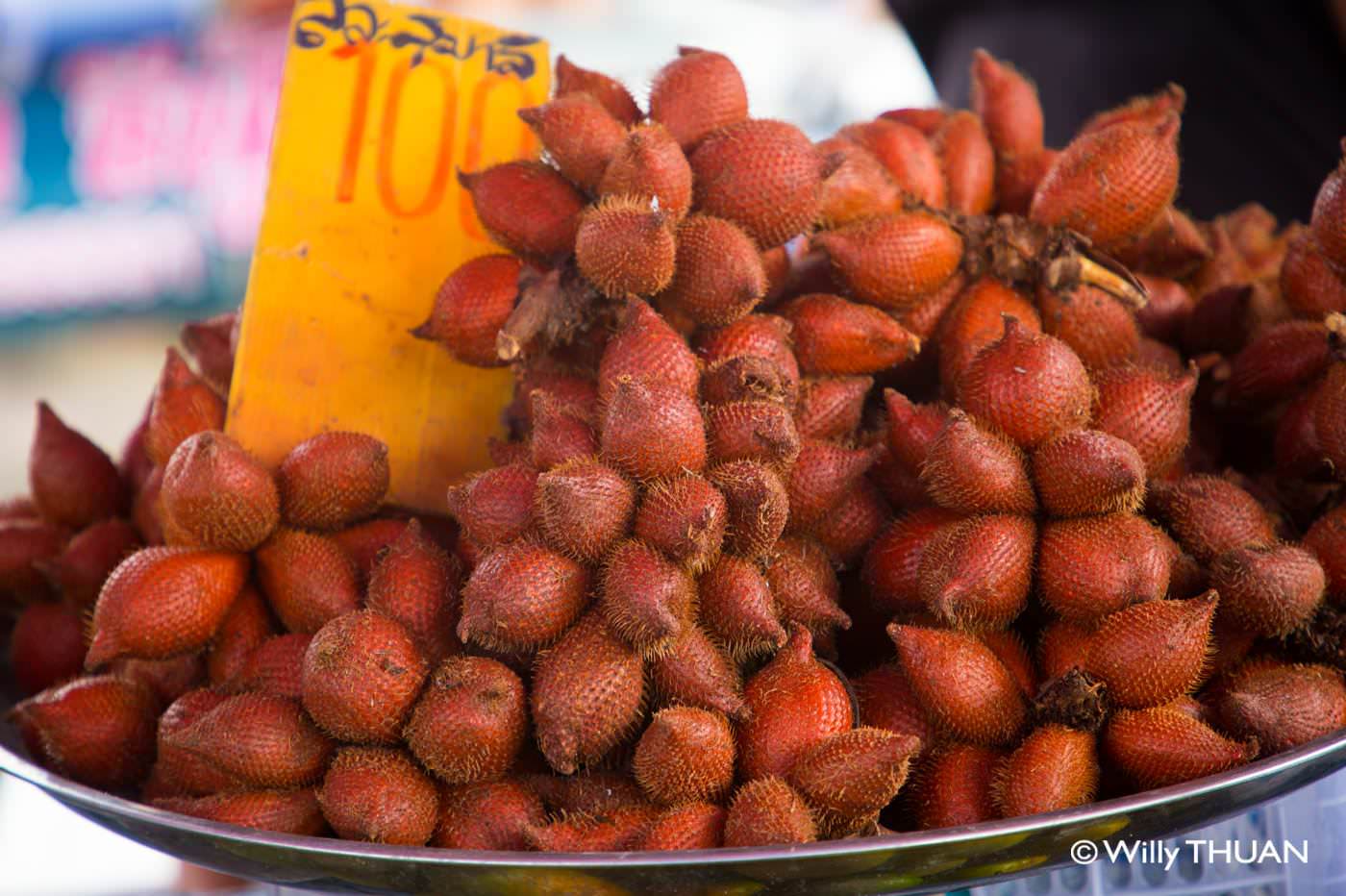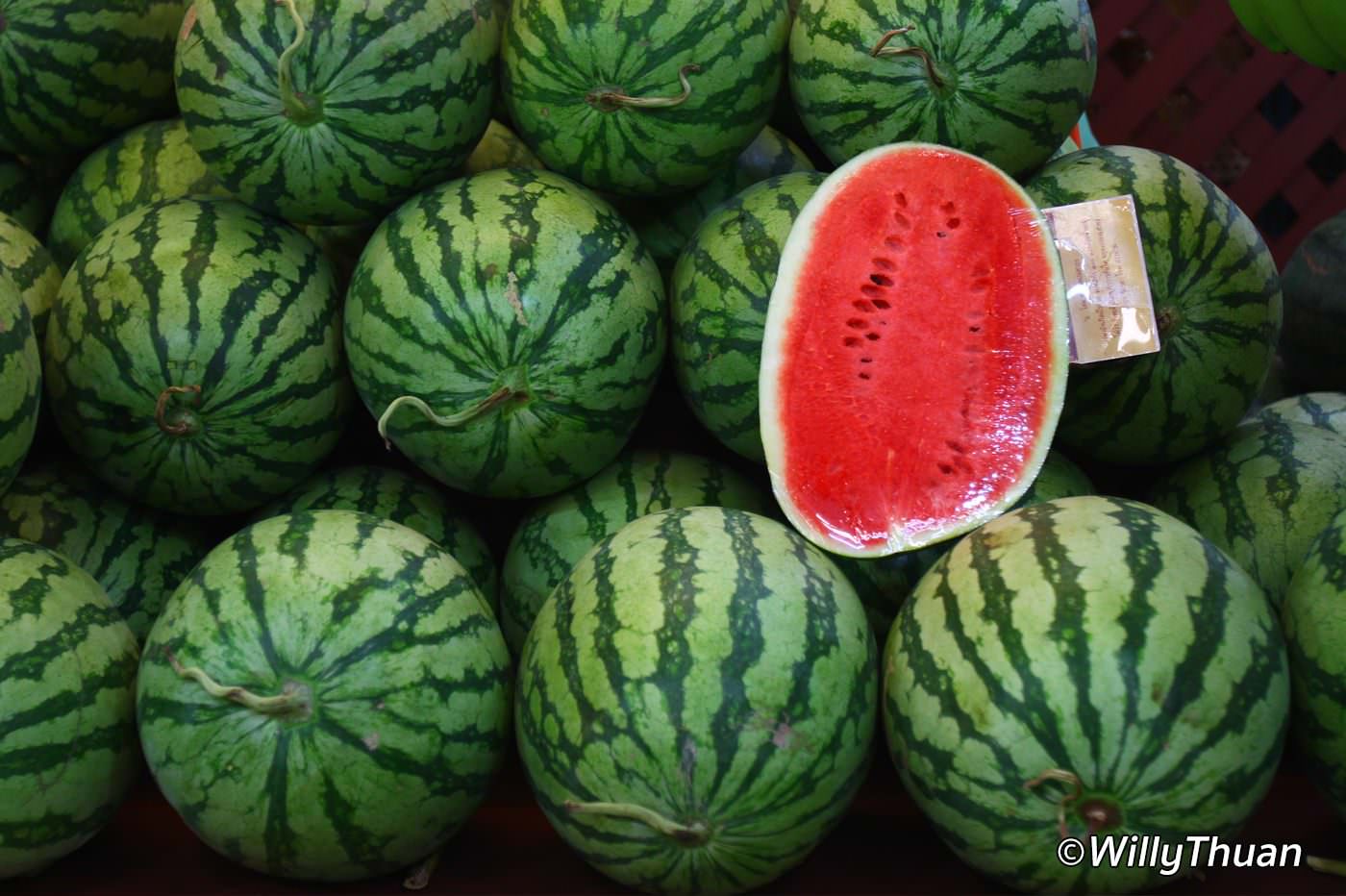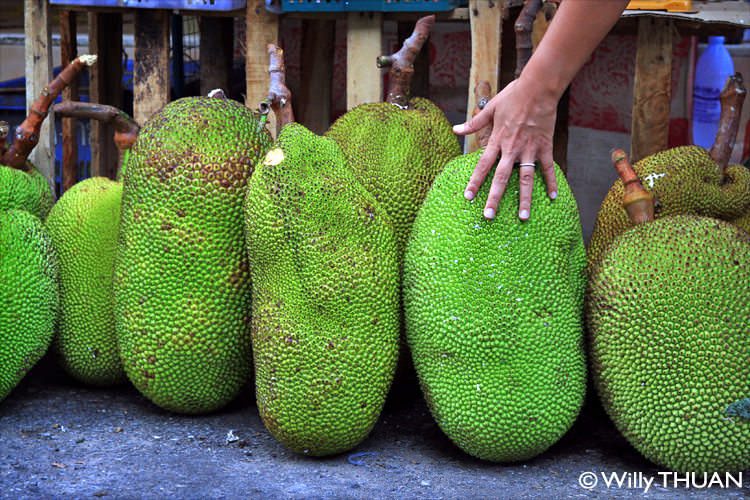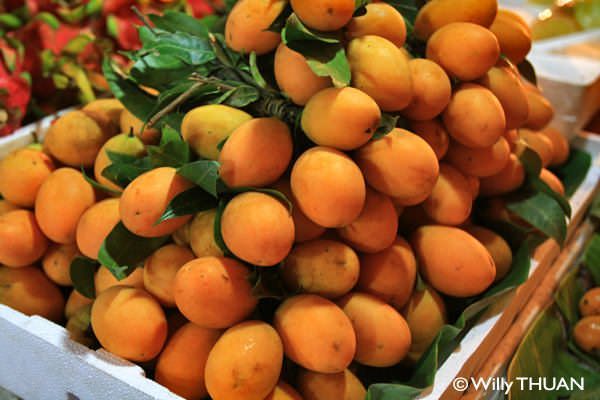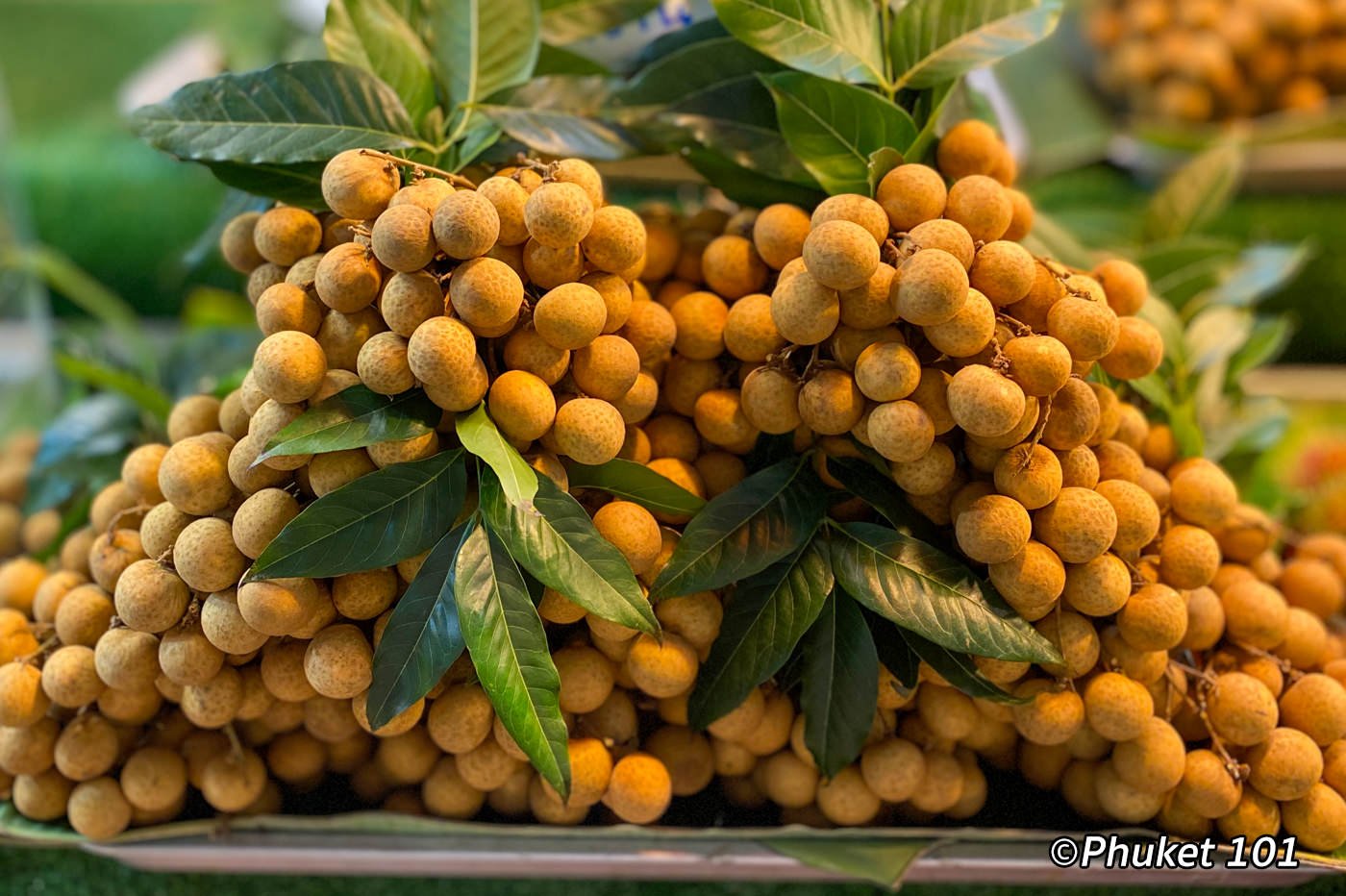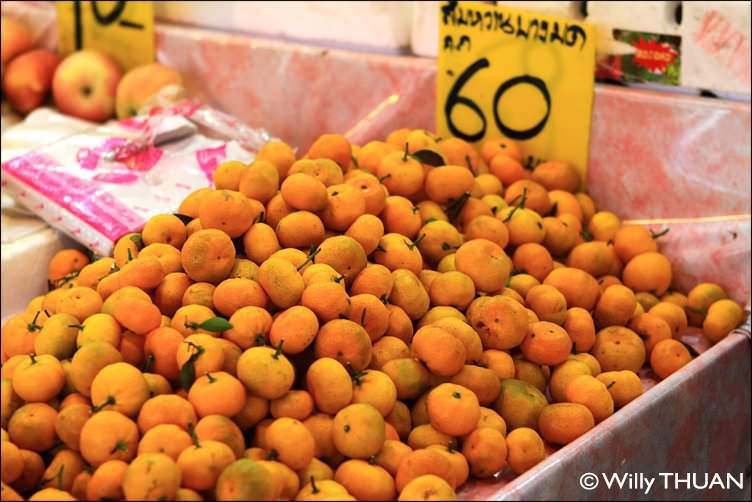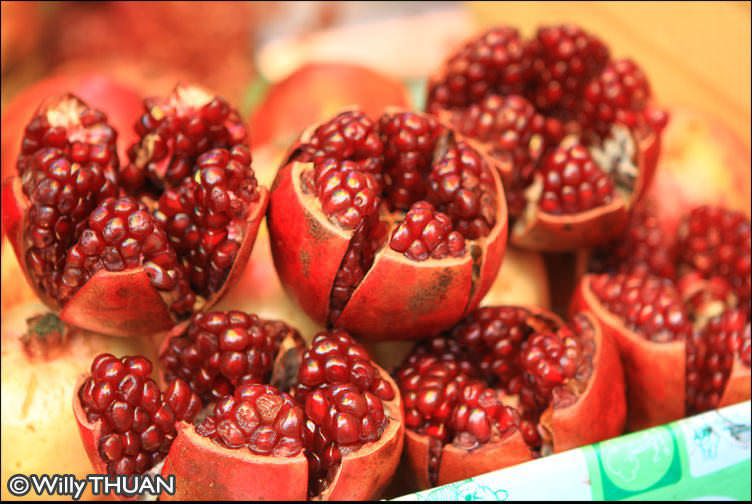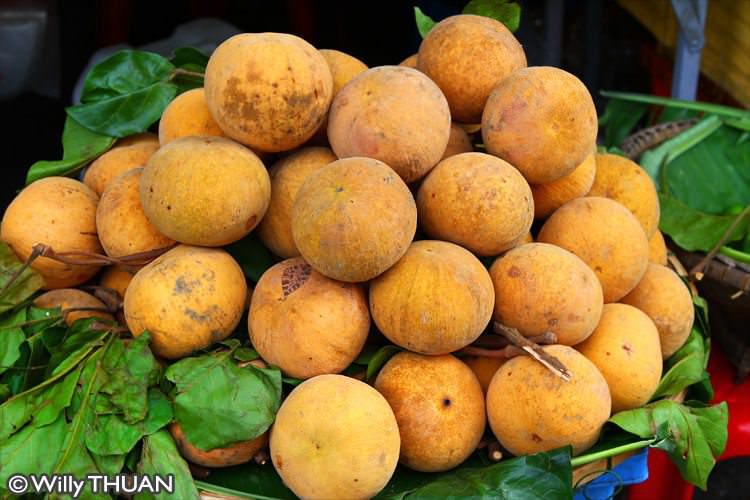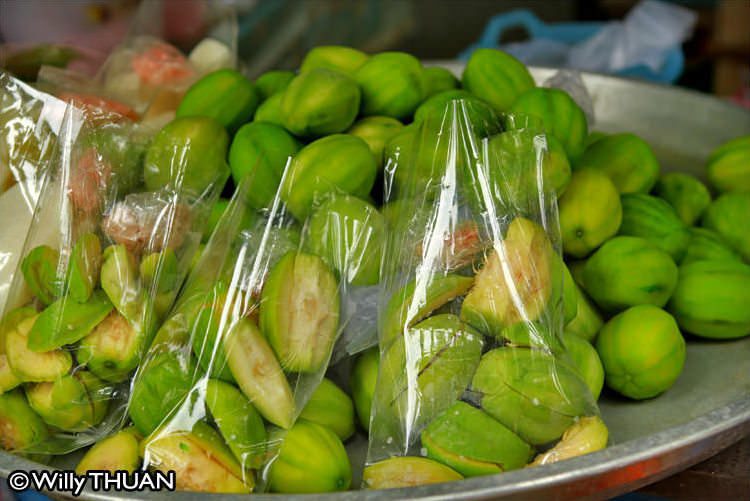What exotic fruits can you find in Phuket?
Exotic Thai fruits in Phuket range from the well-known pineapple or even watermelon to the most surprising ones like the weird-looking Dragon Fruit, the huge pungent Durian or the enormous Jackfruit.
The choice of fruits in Thailand is endless, and visiting a local market in Phuket is a chance to try as many as you can. Some of the best fruit displays in Phuket are at the Banzaan Market in Patong Beach or by the beach in Naithon or Nai Harn beach.
Mango [Ma Muang]
Mango is, without a doubt, one of the most popular tropical fruits in Thailand. You can eat ripe mango with sticky rice and coconut milk, a big traveller’s favourite. Thai people love green as a snack with salt and chilli or as a spicy salad on top of fried fish, which is delicious. Try it next time!
- The best season for mangoes in Thailand is late March through July.
Ma Yong Chit
Plum Mango, known as Mayong Chit in Thai, is a small oval tropical fruit from the Anacardiaceae family native to Southeast Asia. The golden-yellow, egg-sized fruit closely resembles mango but offers a distinctive sweet-sour flavour profile combining mango’s texture with plum-like tartness. Available from February to April, this premium seasonal delicacy typically costs around 80 Baht per kilogram. The entire fruit is edible, including the thin skin, though the bitter seed is usually discarded. Mayong chit boasts high vitamin.
Rambutan [ngǿ]
Rambutan is a well-known and very popular funny-looking fruit. Red and hairy on the outside, it is white and very sweet on the inside.
- The best season for Rambutans is usually May to September, but you probably can find them all year round.
Mangosteens [mung kut]
Mangosteen is a round fruit with a hard-looking purple skin and 5 to 8 soft white segments. It is very sweet and very popular. It’s not difficult to open, but if you drop that purple skin on a white tee shirt, you will have a purple mark forever.
- The best season for mangosteens is from May to August.
Dragon Fruit [Kaew Mang-Korn]
It sounds scary, but the taste of the Dragon Fruits is very faint, just slightly sweet with seeds like in kiwis. The most common variety comes with white flesh, but the red meat is sweeter.
- The best time to enjoy dragon fruit is from April to October, but you can find it all year round.
Phuket Pineapple [Sapparot]
Very popular all over Thailand, Phuket Pineapple is sweeter and has more flavour than other pineapples. It is often served complimentary after dinner and comes with a mix of chilli and salt. Please don’t underestimate the good Phuket Pineapple is, and don’t miss a chance to try it!
8. Durian [Tu Rean]
Durians are called the ‘King of Fruits’ by those who love it. Some of the many known varieties available can be smelly, but the best ones are not as pungent. You love it, or you hate it; it’s that simple.
Papaya [Malakor]
Papaya has many healthy properties if you like its tastes. Thais eat it ripe with lime juice but more often green in the famous Som Tam, a very spicy and popular salad.
Guava [Farang]
Well-known fruit, but the Thai version is harder and not as sweet as the Caribbean version. Thai people often dip it in a mix of sugar, salt and dry chilli; it’s nicer than you might think. ‘Farang’ in Thai also mean ‘Foreigners’.
Star Fruit [Ma Fuang]
Star fruits are a little harder to find on the market, probably because it is not an easy fruit to keep for more than a day. The fruit itself doesn’t look like a star until you slice it. Tastes sweet and very refreshing.
Pomelo [Som O]
Thai people see this as a kind of orange (Som), but it’s more like a giant grapefruit. It is huge, hard to peel and tastes just a bit sweet. Try it!
Thai pomelo is a large citrus fruit that looks like a giant grapefruit, known for its sweet and slightly sour taste. It has a thick yellowish-green rind that encases pink or white juicy segments. Thai pomelo is usually eaten raw, either alone or in salads, and is a popular ingredient in Thai cuisine. It is also believed to have several health benefits, including aiding digestion and boosting the immune system.
The best season for Thai pomelo is generally from August to December, which is considered the peak season.
Rose Apple [Chompoo]
Rose Apple, also known as Chomphu in Thai, is a tropical fruit known for its bell-shaped appearance, thin waxy skin, and mild, sweet flavour. It’s commonly eaten fresh or used in Thai cuisine as a garnish or ingredient. The fruit is a good source of vitamins and minerals and is low in calories. The best season for Rose Apple in Thailand is from June to August, during the rainy season. When choosing Rose Apple, look for firm, unblemished fruit with a bright, uniform colour and a sweet fragrance.
Lychees
Lychees, also known as Lamyai in Thailand, are tropical fruits that is native to China but also grown in Thailand. They have a rough, red exterior that covers a sweet, juicy, and slightly tangy white flesh. Lychees are commonly eaten fresh as a snack or used in desserts and drinks. The best season for Lychees in Thailand is from May to June, during the hot summer months. When choosing Lychees, look for fruits that have a bright colour, a slightly firm texture, and a sweet fragrance.
Snake Fruit [Salak or Rakam]
Snake fruit, also known as Salak in Thailand, is a tropical fruit with a unique appearance and taste, in the same family as the sapodilla. It has a rough, scaly exterior that resembles a snake’s skin and sweet, crunchy, and slightly acidic flesh. It’s hard to peel and has a big seed in the middle. Snake fruit is commonly eaten fresh as a snack or used in desserts and salads. The best season for Snake fruit in Thailand is from May to September, during the rainy season. When choosing Snake fruit, look for fruits that have a bright colour, a slightly firm texture, and a sweet fragrance.
Custard Apples [noina]
Custard apples are round or oval and have green or brown skin. The fruit’s flesh is white or yellow and has a custard-like texture. The fruit has a sweet, creamy flavour and is often eaten fresh or used in desserts. Custard apples are a good source of vitamins and minerals, including vitamin C, potassium, and iron. They are also low in calories and fat, making them a healthy choice for people watching their weight. The best time to enjoy Custard Apple is July and August.
Jack Fruit [Kanoon]
Jackfruit, also known as Khanun in Thailand, is a tropical fruit that is widely cultivated throughout Southeast Asia, including Thailand. It has a large, oblong shape with bumpy green or yellow skin that encases sweet, fragrant, and juicy flesh. Jackfruit is commonly eaten fresh as a snack or used in savoury dishes such as curries and stir-fries.
The best season for Jackfruit in Thailand is from March to June, during the hot summer months. When choosing Jackfruit, look for fruits that have a bright colour, a slightly firm texture, and a sweet fragrance.
Plum Mango [Mayong Chit]
Ma Prang, commonly known as maprang or marian plum (Bouea macrophylla), is a small oval tropical fruit native to Southeast Asia, closely resembling mango in appearance and texture. The egg-sized fruit transitions from green when unripe to golden-yellow or orange when mature, featuring edible skin and a bitter purple seed. Available April through May, ma prang offers variable flavour profiles ranging from tart to honey-sweet depending on cultivar. The entire fruit is edible, including the skin, though many discard the skin.
Longan [Lam Yai]
Longan is a member of the Sapindaceae family, which includes other fruit trees such as lychees and rambutans. The longan fruit is small and round, with a thin, yellowish-brown skin and juicy, translucent flesh. It has a sweet, slightly tangy flavour and a delicate, chewy texture. The fruit is often used in desserts, candies, and beverages and is considered a delicacy in many parts of Asia. It is also used in traditional medicine for its various health benefits.
Pomegranate
Pomegranate is a round, ruby-red tropical fruit native to Southeast Asia with a distinctive crown-like top and thick leathery skin. Inside, the white inner flesh contains hundreds of juicy, seed-filled arils—crunchy jewels bursting with sweet, tangy flavour. Pomegranates thrive in warm, dry climates and grow abundantly in Thailand from April through December. Rich in vitamin C, fibre, and powerful antioxidants like ellagitannins and anthocyanins, pomegranates support heart health and reduce inflammation. The fruit is eaten fresh, juiced, or extracted.
Kraton
Kraton, also known as santol or cottonfruit (Sandoricum koetjape), is a round tropical fruit native to Southeast Asia with distinctive velvety tan skin speckled with brown spots. The grapefruit-sized fruit features papaya-coloured flesh surrounding a milky-white, juicy pulp and typically contains three to five hard, inedible seeds. Flavours range from tart in unripe fruits to candy-like sweetness when fully mature, with a tropical aroma that’s distinctly fragrant.
Available from May through August, kraton thrives in Thailand’s warm climate. In Thai cuisine, it’s served raw with sweet fish sauce and dried shrimp as a street snack, incorporated into curries with grilled pork, or prepared as santol salad with shrimp, lime juice, and chilli peppers. The fruit is commonly pickled in salt and sugar brine, transforming it into a sweet confection served with shaved ice. Nutritionally, kraton provides dietary fibre, pectin, and anti-inflammatory compounds that support digestion and overall wellness.
Makok
Makok, also known as hog plum, is a small green tropical fruit native to the Caribbean and South America but now deeply rooted in Thai cuisine and markets, with a flavour profile resembling a tart Granny Smith apple. The fruit ranges from sour when unripe to pleasantly sweet as it ripens. The flesh surrounds a central pit requiring careful removal like a mango. In Thailand, makok appears primarily as a secondary ingredient in som tam (papaya salad) and occasionally in other regional dishes, where unripe fruits add tangy crunch. Young leaves are served raw with nam phrik (chilli paste), offering sour and slightly bitter notes. The fruit can be eaten fresh, pickled, or used in juices and jellies. Peak season runs from July through September, making makok a readily available option at Thai markets throughout the summer months.
Gac
Gac is a distinctive tropical fruit native to Southeast Asia with a striking spiky orange-red exterior and vibrant red interior. Known as the “fruit from heaven,” gac thrives in Thailand’s warm climate, flowering from October to November with harvests running from December to February. The spiny outer skin is inedible, but the soft, mild-tasting pulp and seed membrane inside contain exceptional nutritional value. Gac boasts remarkable carotenoid levels, including 70 times more lycopene than tomatoes and 10 times more beta-carotene than carrots, making it a powerful antioxidant source for eye health, immune support, and skin vitality. In Thai cuisine, young immature fruits are commonly cooked in curries, whilst ripe pulp appears in juices and traditional sticky rice dishes. The fruit’s high vitamin C content and fibre support overall wellbeing, positioning gac as a nutritious addition to Thailand’s tropical fruit repertoire.




